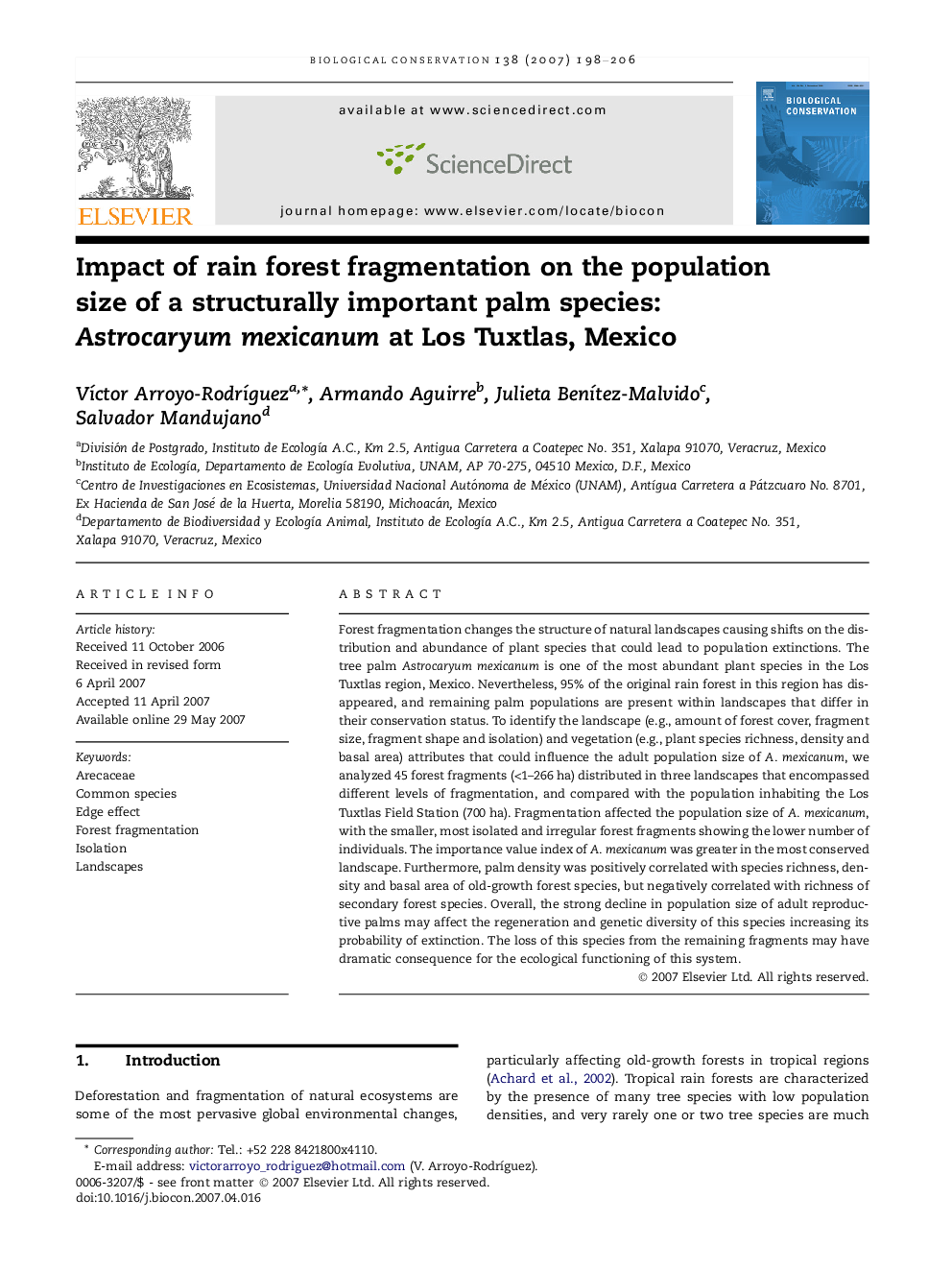| Article ID | Journal | Published Year | Pages | File Type |
|---|---|---|---|---|
| 4387261 | Biological Conservation | 2007 | 9 Pages |
Forest fragmentation changes the structure of natural landscapes causing shifts on the distribution and abundance of plant species that could lead to population extinctions. The tree palm Astrocaryum mexicanum is one of the most abundant plant species in the Los Tuxtlas region, Mexico. Nevertheless, 95% of the original rain forest in this region has disappeared, and remaining palm populations are present within landscapes that differ in their conservation status. To identify the landscape (e.g., amount of forest cover, fragment size, fragment shape and isolation) and vegetation (e.g., plant species richness, density and basal area) attributes that could influence the adult population size of A. mexicanum, we analyzed 45 forest fragments (<1–266 ha) distributed in three landscapes that encompassed different levels of fragmentation, and compared with the population inhabiting the Los Tuxtlas Field Station (700 ha). Fragmentation affected the population size of A. mexicanum, with the smaller, most isolated and irregular forest fragments showing the lower number of individuals. The importance value index of A. mexicanum was greater in the most conserved landscape. Furthermore, palm density was positively correlated with species richness, density and basal area of old-growth forest species, but negatively correlated with richness of secondary forest species. Overall, the strong decline in population size of adult reproductive palms may affect the regeneration and genetic diversity of this species increasing its probability of extinction. The loss of this species from the remaining fragments may have dramatic consequence for the ecological functioning of this system.
